We caught up with the brilliant and insightful Liz Altmann a few weeks ago and have shared our conversation below.
Hi Liz, thanks for joining us today. So let’s jump to your mission – what’s the backstory behind how you developed the mission that drives your brand?
ARA KARA is a super sustainable small business focusing on unique one of a kind reworked and vintage clothing. Our mission is to focus on designing and producing items that are ethically made in the U.S. while targeting industry waste by upcycling and reworking antique, vintage, and thrifted materials before they reach the textile waste stream.
This is meaningful for me because as a fashion industry professional, I have seen firsthand the global impact, both environmentally and economically, of the gross amount of waste, overproduction, unethical chains of production, and human impact the fashion industry continues to have on the planet and its people.
Remaking/reworking/upcycling is something I have personally always enjoyed, and done as a hobby for over two decades. As the luxury and fast fashion worlds continue to diverge, I believe there is room for a new – and sustainable – middle ground in fashion where uniqueness, quality materials, and excellent design can exist.
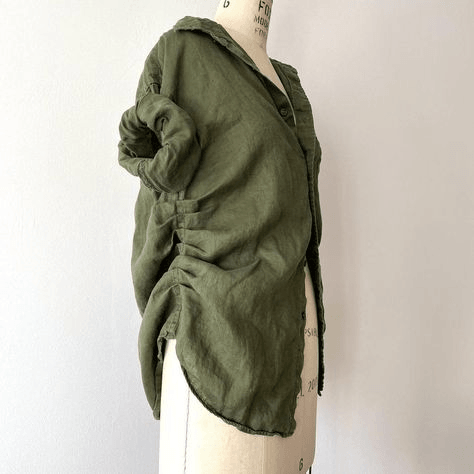
Awesome – so before we get into the rest of our questions, can you briefly introduce yourself to our readers.
My love of vintage started as I was growing up in the late 90s / early 2000s Cleveland underground music scene. Inspired by the small local vintage and record stores, as a teen I began reworking thrifted vintage for myself and friends and eventually other clients.
My career in fashion in New York City has taken me from managing production in a true U.S. couture atelier, to working with indie Brooklyn designers in mid-2000’s Williamsburg, to working with Rizzoli providing archival documentation of historical and rare fashion for books published by the FIT Museum and Ralph Lauren. In my search to work more ethically in the second hand marketplace, my experience has ranged from becoming the first fashion director of Cure Thrift Shop in the East Village where neighbor Chloë Sevigny regularly dropped off donations, to manager of the Manhattan Beacon’s Closet, regularly buying from celebrities such as Natasha Lyonne, models, designers, and even the fashion editor of American Vogue.
I really wanted to found a brand that deliberately focused away from current trends in re-working and upcycling, where garments tend to look a bit too overtly ‘reconstructed’ or chopped up, and also focus more on the uniqueness and rarity of a one-off item instead of overproduction of a ‘reMade’ design.
I purposefully seek out damaged items in need of repair or beyond – and use these materials to give new lives to the things passed over by most people in the second hand marketplace.
My designs are informed by the nature of the found materials, while referencing some of fashion’s most iconic styles and designs which I have personally handled or worn in my years working with designer and luxury second hand items.
I make clothing, accessories, and home goods that are meant to be genderless and also size inclusive, because so much of traditionally gendered clothing is used in the industry today as inspiration for either consumer.
I am most proud of the times when my skills can combine to save a vintage or historic garment, and ensure it will be cherished by its new owner for another long period of time. Some of my favorite examples are a 1960’s wedding gown that was reworked into a mini dress and purchased by a customer for their planned elopement, and an antique Edwardian skirt that was purchased by a queer teenaged customer and worn to their prom. Both of those items, instead of becoming trash due to their damages were able to be saved and turned into a cherished item that is part of some very special memories.
But outside of the specialty or historical items that have damages that I come across, I try to focus on really common and abundantly available items such as men’s dress shirts, which I can transform into more minimalist or avant-garde styles for everyday wear, that can become a part of someone’s closet as a staple for years and can be styled in many different ways for different looks.
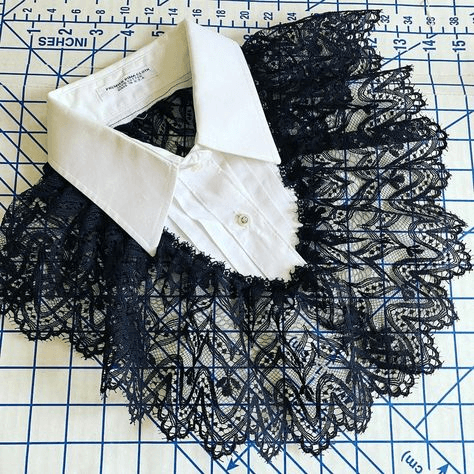
We’d love to hear your thoughts about selling platforms like Amazon/Etsy vs selling on your own site.
I am a HUGE fan of e-commerce in lieu of a brick and mortar retail experience. I have experience managing both for various well known NYC small businesses, and during the pandemic it was a real eye-opener to many physical retailers and small businesses in New York which really relied on their foot traffic and heavily frequented tourist areas for sales, which fell off a cliff overnight.
So, when I started my business I really focused on networking across e-commerce platforms for maximum visibility and following, including Depop and eBay which are highly trafficked by two categories of consumer I wanted to target – trend saavy younger Gen Z consumers who wanted unique and ethical special items, and longtime vintage enthusiasts who want the rare and collectible. eBay of course has the broadest reach, but Depop really at the time targeted the consumer I was looking for. Of course the goal is always to transfer your customer to dealing directly with you, so I laid plans to build my own website.
In my personal experience setting up a dedicated e-commerce web store for a small business I really prefer Squarespace as a platform over Shopify. I think Shopify has a lot of failings, especially for small businesses that sell many individual unique items vs. quantity or stock of multiples of the same item. I also find their platform unnecessarily complex with everyday processes and not user friendly to non-web designers. Squarespace is actually extremely user friendly and intuitive, and you don’t need a web designer to create your website for you. It also seamlessly integrates with Square, so if you do a pop-up or in-person event and need a physical point of sale system that integrates with your stock on your e-commerce site it is excellent for that. There’s a reason every small business including your local coffee shop uses Square. It is super easy to set up, has invoicing capability, and now you can even bypass Stripe and use Square for your e-commerce Squarespace web payment processing, so everything is totally integrated and easy to find and located in one place.
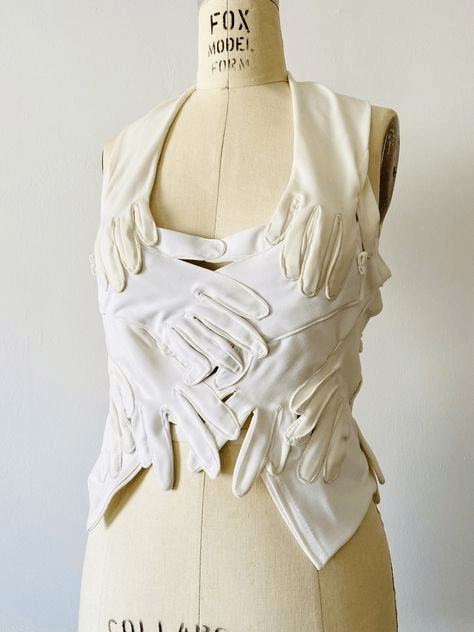
Can you talk to us about manufacturing? How’d you figure it all out? We’d love to hear the story.
I do manufacture my own products. I use (obviously) previously constructed garments or items for the most part that I am mostly modifying. I was taught to sew by hand at age 3 and interned in a fine fabrics specialty shop as a high school student, where the owner was a former Burda patternmaker. She gave me lots of instruction, and I built upon that knowledge as a fashion design major at Savannah College of Art and Design. I really focused my education on furthering both my draping and patternmaking skills. I worked as a Patternmaker in the fashion industry in NYC for many years as well as being a Production Manager for several brands. Working closely in a couture atelier with the in-house production team really helped me elevate my skills to the highest level, and curate my attention to detail in a way that was a totally invaluable experience for me. So, I can draft or drape a pattern, do my own cutting, and sew my own samples or final items myself. There is nothing currently that I outsource, although I am thinking of outsourcing some overdying of garments in the future. Generally if there is a skill I need to learn to produce a garment, I’m willing to explore it myself with the help of youtube or other online lessons.
Contact Info:
- Website: https://www.arakaravtg.com/
- Instagram: @ara_kara_

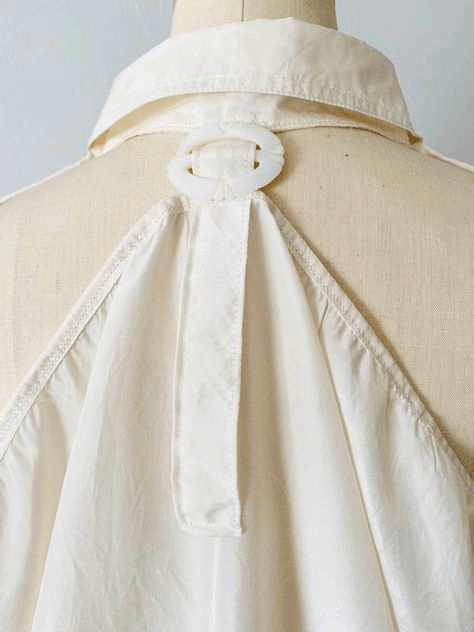
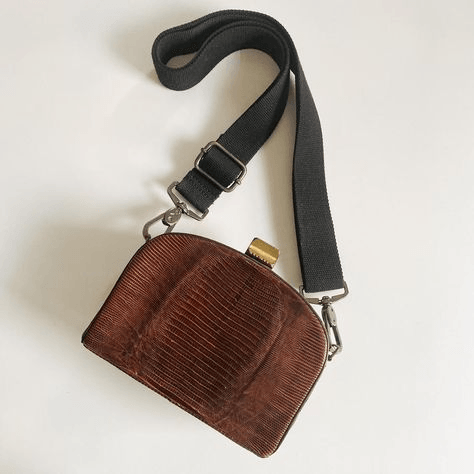
Image Credits
All images via Ara Kara


